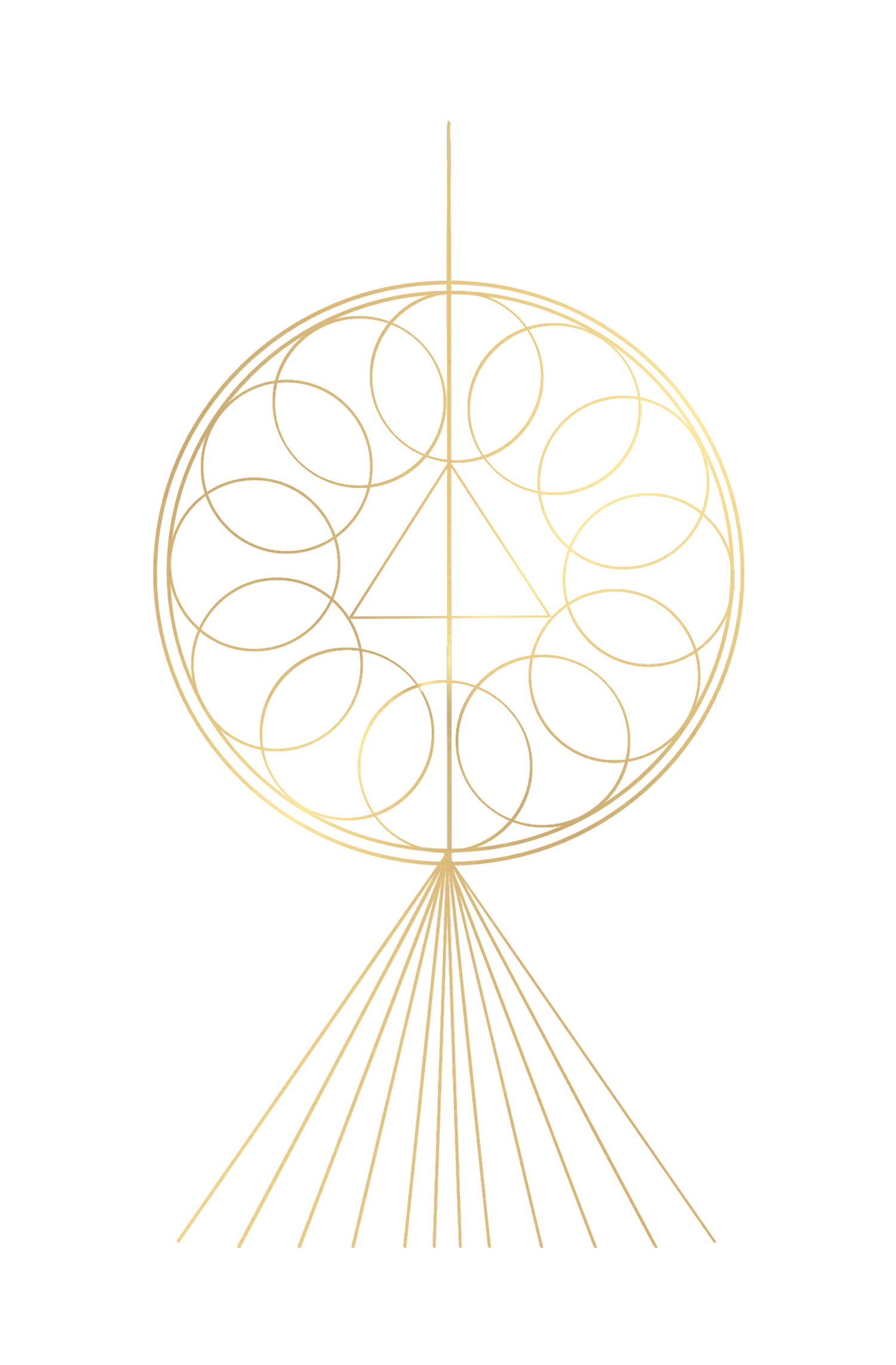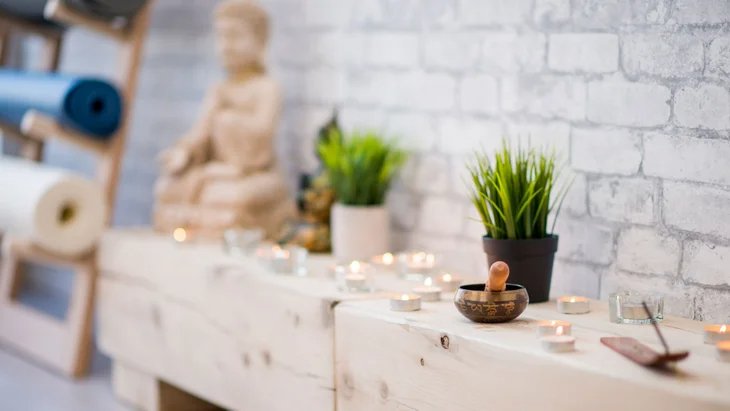
Root &
Ground
Being grounded means having a solid foundation in both body and mind. Practicing yoga can help you establish this foundation by allowing you to root down, expand, and explore your body.
Grounded Roots allows you to deepen your practice, learn, grow, and connect with your inner self.
-

Ardha Matsyendrasana ~ Half Lord of the Fishes
Benefits of Half Lord of the Fishes Pose:
•Stretches shoulders, hips, neck, and spine.
•Relieves fatigue, backache, and sciatica.
•Stimulates digestion and metabolism.
•Stimulates kidneys and liver.
•Relieves menstrual discomfort.
Twisting postures also help tone the belly and massage internal organs.
-
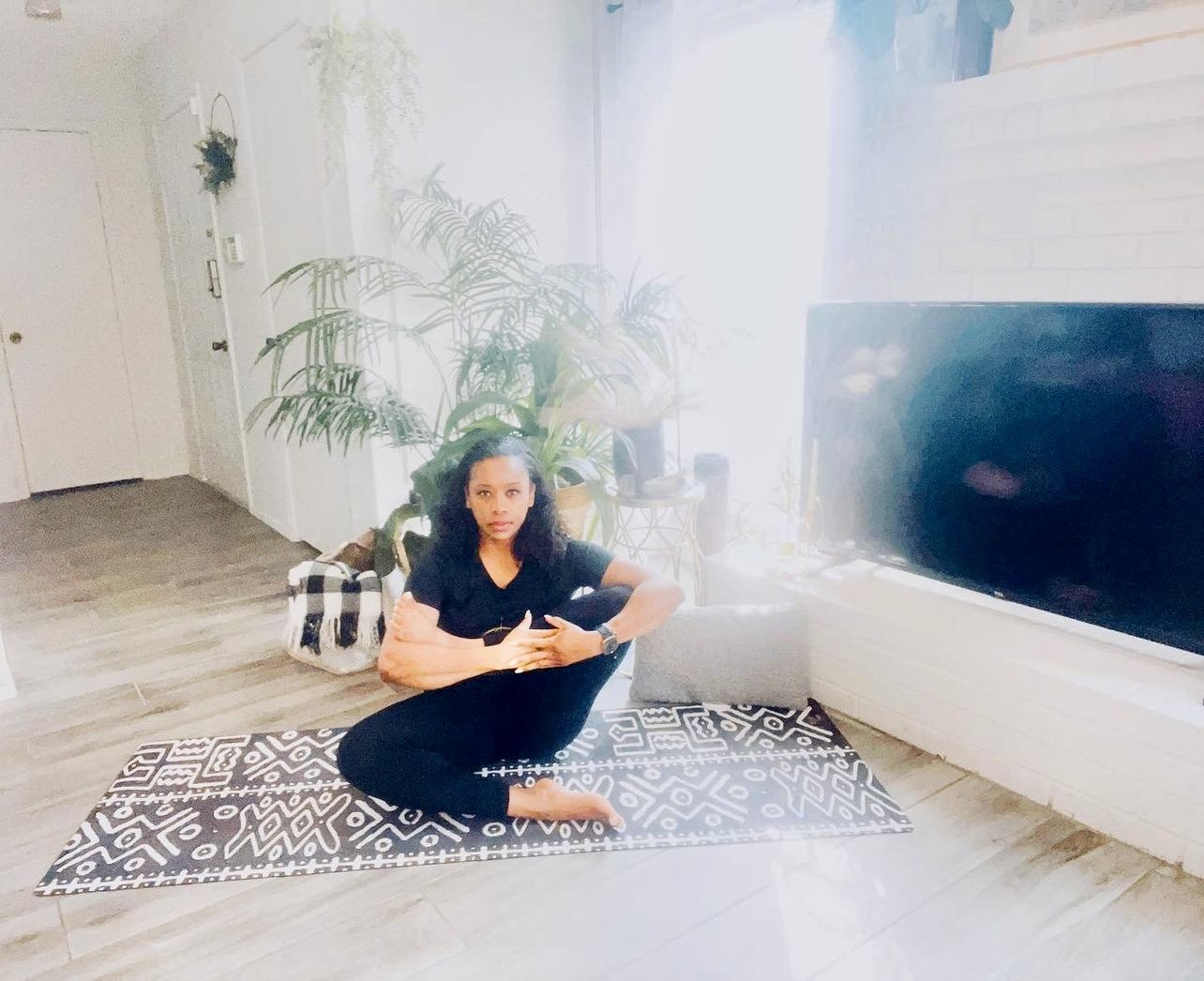
Hindolasana ~ Cradle Pose
Benefits of Cradle Pose:
•It's a hip opener that stretches the hamstrings, quads,
adductors (groin), glutes, and pelvic floor.
•Stretches the Lower Back releasing tensions and
stiffness.
•Improves Flexibility and range of motion in the knees,
hips, thighs, and lower back.
•Flexes the groin muscles (adductors) building flexibility and strength in the legs.
-

Gomukhasana ~ Cow Face Pose With Eagle Arms
Also known as Shoelace pose in Yin Yoga.
Benefits of cow face pose with eagle arms:
•stretches the upper back and the shoulders
•improves posture
•strengthens the spine
• opens your hips and stretch the ankles and thighs.
-
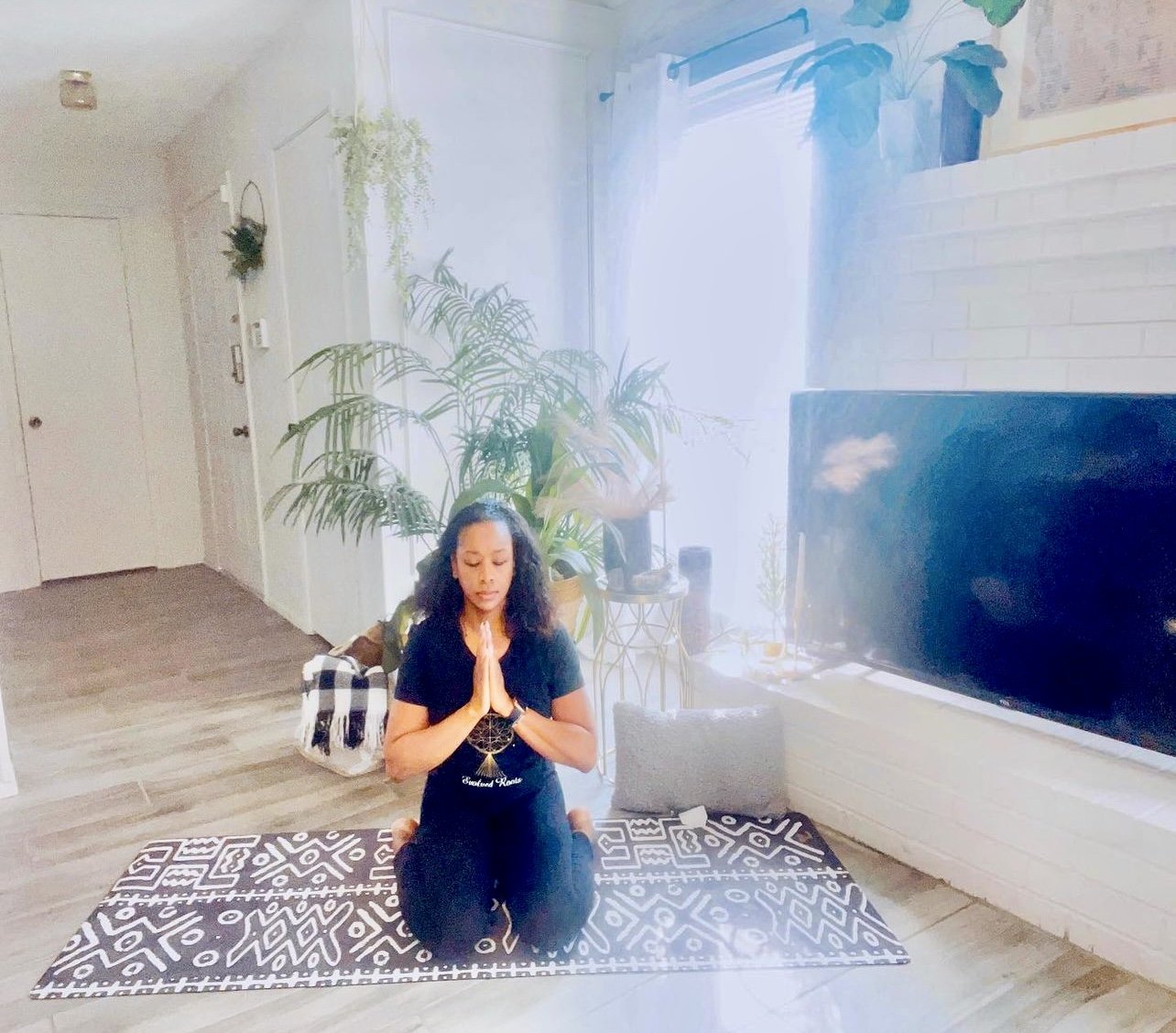
Virasana ~ Hero pose
Getting in the posture:
Rather than sitting on your feet, sit between them, if that's available to you, with the tops of your feet on the floor.
Benefits
•Stretches the thighs, knees, and ankles
•Strengthens the arches
•Improves digestion
•Helps relieve the symptoms of menopause
•Reduces swelling of the legs during pregnancy (through the second trimester)
•Therapeutic for high blood pressure and asthma
-

Supta Virasana ~ Reclined Hero pose
Also known as Saddle pose. Saddle pose is a Yin yoga pose targetting mostly the large quadriceps, as well as the hip flexors and the rectus abdominis.
A deep opening posture it:
•creates space in the sacral-lumbar arch and gives some
•gentle compression to the lower back.
Getting in the posture:
This is a very intense posture, so be mindful getting into, and out of the pose.
From hero pose, sitting in between your feet, lean back slowly to find your edge. Use your hands and elbows to hold yourself up or lie all the way down using a bolster or pillow along the spine for support if you need it.
Place your hands wherever they feel comfortable for you, and hold.
To come out of the pose, engage your core and use your arms to press yourself up, and release the legs.
Pause and give yourself a moment.
This posture is great for athletes and people who do a lot of standing or walking
-

Ustrasana ~ Camel pose
Getting into the posture:
Come onto your knees with your knees hip-width apart in a kneeling position with the tops of your feet on the floor.
Length your spine, tucking your tailbone slightly towards the ground.
Place your palms at the base of your spine to start, supporting your lower back, stay here if that's enough for you.
To go deeper look up and back, slowly leaning backward.
Inhale to lift your gaze, and begin to bend backward, expanding up and open through the sternum reaching for your heels.
On an exhale push your glutes forward to engage the front of your thighs as you reach for one heel and then the other, and hold.
:
To come out of the pose bring your hands back to your sacrum to support the lower back as you slowly and gently rise from your backbend.
Benefits of Camel pose:
Camel pose strengthens the chest, abdomen and quadriceps muscles and tones the glutes and hamstrings.
It allows cervical tension to be reduced while stretching the neck in the backbend.
It also:
•aids in stretching and strengthening the shoulders, arms, back, and legs muscles.
•reduces fat on thighs
•opens up the hips, stretching deep in the hip flexors + expands the abdominal muscles
•promotes greater hip flexibility.
-

Setu Bandha Sarvangasana ~ Bridge pose
Benefits of Bridge pose:
Bridge pose helps strengthen your back muscles, glutes, and hamstrings.
Bridge Pose is a mild inversion that elevates your heart above your head. This shift in blood flow improves stress, tension, fatigue, anxiety, insomnia, and mood. Arching your body upward helps open your lungs and calm your mind. It can even help energize your body and reduce symptoms of mild depression.
It can also:
•Help to improve posture
•Improved digestion and core activation
•Strengthens the knees, quads, and hips
•Stretches the hip flexors, abs, and obliques
-

Eka Pada Rajakapotasana ~ King pigeon pose
King pigeon pose is a powerful healing heart and hip opening backbend.
We tend to carry a lot of heavy emotions in our back and hips, so opening your hips and your heart can bring those emotions out.
There are many variations to this posture, and it will look different in every body, so choose the variation that feels good for you in your body.
Benefits of King Pigeon Pose
•Stretches and rejuvenates the spine
•Opens the hips and chest
•Strengthens the abdominal muscles and the back
•Improves digestion and aids in detoxification
•Increases energy and fights fatigue, while boosting blood
circulation and activating the central nervous system.
-
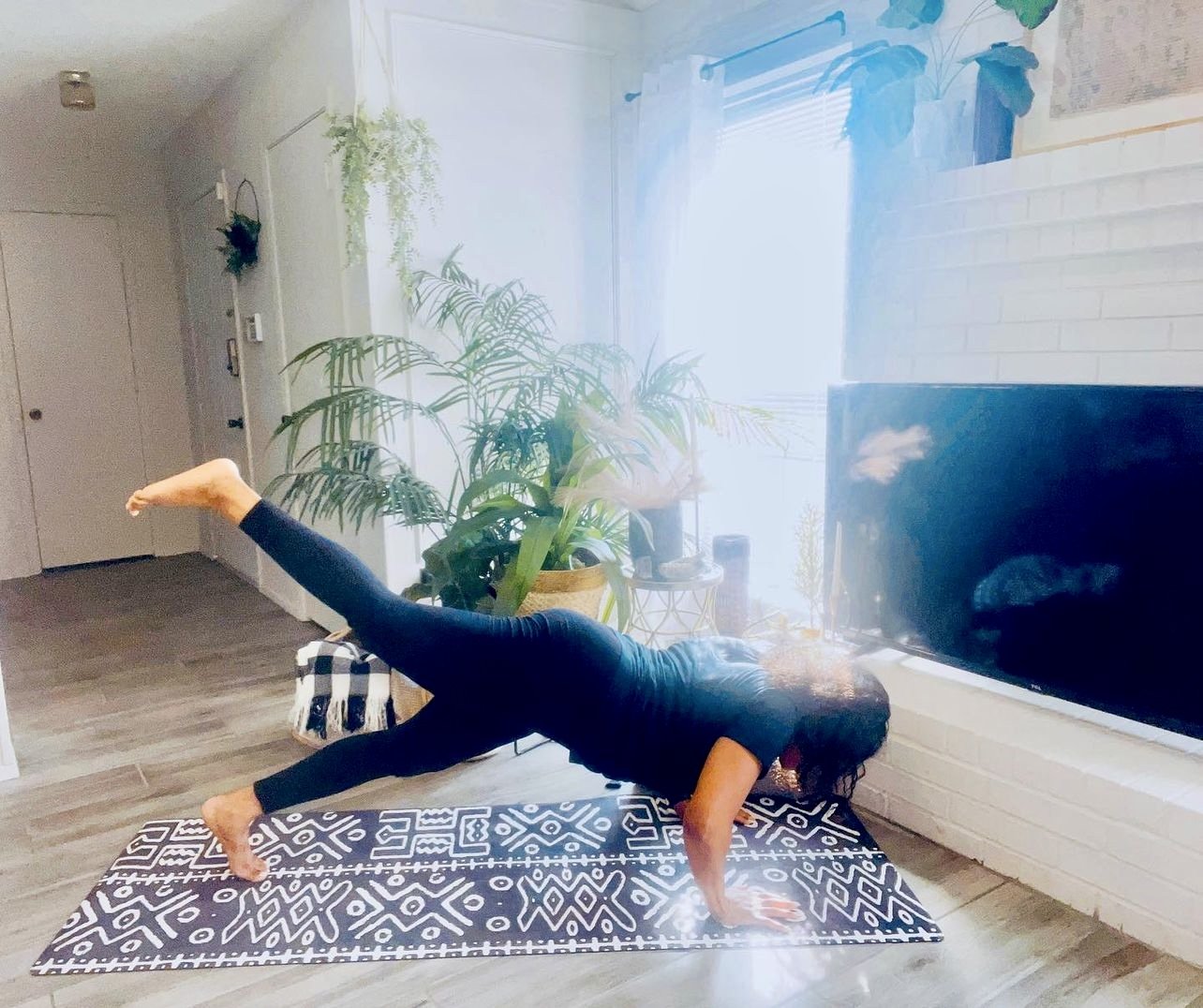
Chaturanga Dandasana ~ Plank leg lifts
Plank leg lift is a full-body exercise you can do anywhere any time, and it can be added to any workout or movement practice.
Adding leg lifts to your plank can help activate your ab muscles more than regular planks, and they're great at strengthening your core. With a strong core comes good posture, better balance, and even a healthier back.
Beyond the muscles in your abs, plank leg lifts also work your:
•glutes
•hamstrings
•quads
•shoulders
-

Malasana ~ Yogi Squats
A deep hip opener also known as Garland Pose...
This opening and strengthening posture creates feelings of groundedness and calm while offering amazing benefits for the body.
This posture:
•Opens up the hips + Improve digestion
•Offers relief during pregnancy
•Stretches the ankles, calves, knees, groin, glutes, quadriceps, and hamstrings.
•Strengthens the feet and ankles.
•Boost metabolism
Can help to alleviate lower back pain.
-

Bakasana ~ Crow pose
Also known as Frog Stand is a hand-balancing posture that targets the abdominal muscles, upper back, wrist, and arms.
This pose:
•Strengths the wrists and shoulders + Improves overall body control and balance
•Strengthens arms and wrists.
•Stretches the upper back.
•Strengthens the abdominal muscles.
•Opens the groins.
•Tones the abdominal organs.
-

Dhanurasana ~ Bow pose
This total body opening backbend offers a fantastic stretch for the spine, abdominals, hip flexors, biceps, pecs, back, abdomen, arms, and legs and stretches the throat and chest.
Health benefits of this posture include:
•Enhanced blood circulation
•Improves body posture and hunched back
•Better digestion
•Stronger hamstrings and glutes
•Improved body flexibility
If you spend a lot of time sitting at a desk, in a car, or looking at your phone, this pose will be a great addition to your practice.
艹 Remember…
Every pose looks different in every BODY, so check in with yourself, listen to your body, and do what feels good to and for you.
-

Bhujangasana ~ Cobra Pose
Cobra pose is a heart-opening backbend that allows you to stretch your entire upper body, fights fatigue, and relieves lower back pain, boosting both the energetic and the physical body.
Cobra pose offers many health benefits.
Aside from opening the chest and strengthening the back, cobra pose also:
•Opens the shoulder blades, neck, and collarbones
•Improves spinal posture, flexibility, and alignment
-

Bhujangasana ~ Seal Pose
Similar to Cobra pose Seal pose is a Yin Yoga pose that is a deeper variation of Sphinx pose.
•Notice the difference in the hands and feet.
A deep backbend this pose targets the lower lumbar area.
Benefits of Seal Pose:
•Opens the front of the body and compresses the lower spine, sacrum, and region of the kidneys energizing the Adrenal glands.
•Restores natural curvature in the lumbar spine and promotes connective tissue regeneration in the sacral area.
•Stimulates the Urinary Bladder meridian through mild compression of the lower back.
•Stimulates the thyroid gland if the head is leaning backward.
•Activates the Kidney meridian and the ligaments along the spine.
-

Utkata Konasana~ Goddess Pose
Goddess Pose is a deep hip opener that promotes grounding and strengthening of the lower body.
Goddess Pose stimulates the Root, Sacral, and Solar Plexus Chakra and activates the kundalini energy.
Goddess Pose invokes your feminine energy making you more graceful and poised.
Through goddess pose, we get in touch with the divine feminine and balance our energy to feel the deep inner wisdom within ourselves.
Benefits of the Goddess Pose
•Improves balance and coordination
•Strengthens legs, glutes, pelvic floor, core, and shoulders
•Increases flexibility and mobility in the hips, shoulders, and legs
•Improves blood flow
•Stimulates digestion
•Promotes relaxation and stress relief
•Enhances focus and concentration
-

Ardha Dhanurasana ~ Half Bow Pose
The precursor to Bow Pose, Half bow energizes and strengthens the entire body, and especially builds core body strength.
Benefits of Half Bow Pose
•Improves spine flexibility
•Opens the chest
•Lengthens quadriceps and other leg muscles
Improves balance
•Soothes the mind
•Stimulates the kidneys, adrenals, and reproductive system.
•Stretches the shoulders, the chest, the thighs, the groins, and the abdomen.
•Strengthens the legs and the ankles.
•Improves spine flexibility.
-

Ardha Chandrasana ~ Half Moon Pose
Half Moon Pose is a challenging posture that will test your balance, strength, and stability.
In Half Moon Pose you tap into energies from both the moon (calm, cooling) and the sun (fiery, intense), as you root down with your standing leg and stabilizing arm while lifting and extending your raised leg and opposite arm.
Benefits of Half-Moon Pose
•Improved balance and stability
•Pain relief in your hips and back
•Stress relief
•Improved digestive health
•Relief from menstrual symptoms
•Counteracts the effects of sitting
•Strengthens your core muscles
•On your standing thigh: strengthens your thighs and ankles, and stretches the hamstrings and glutes
•On the lifted thigh, it stretches your groin hip flexors, including your psoas. It also strengthens your thighs and glutes
-

Utkatasana ~ Chair Pose on Tiptoes
Chair Pose on Tiptoes is a variation of the traditional posture.
Chair Pose on Tiptoes requires focus and is a combination of strength, stretch, and balance because it challenges the musculoskeletal system to balance the body's weight on the toes.
Benefits of Chair Pose on Tiptoes
•strengthens the shins, knees, and lower back
•opens the rib cage and chest which enables the lungs to have added space to breathe deep.
•it opens and relaxes your ankles and feet muscles
•allows for ankle flexibility and improves range of motion
-
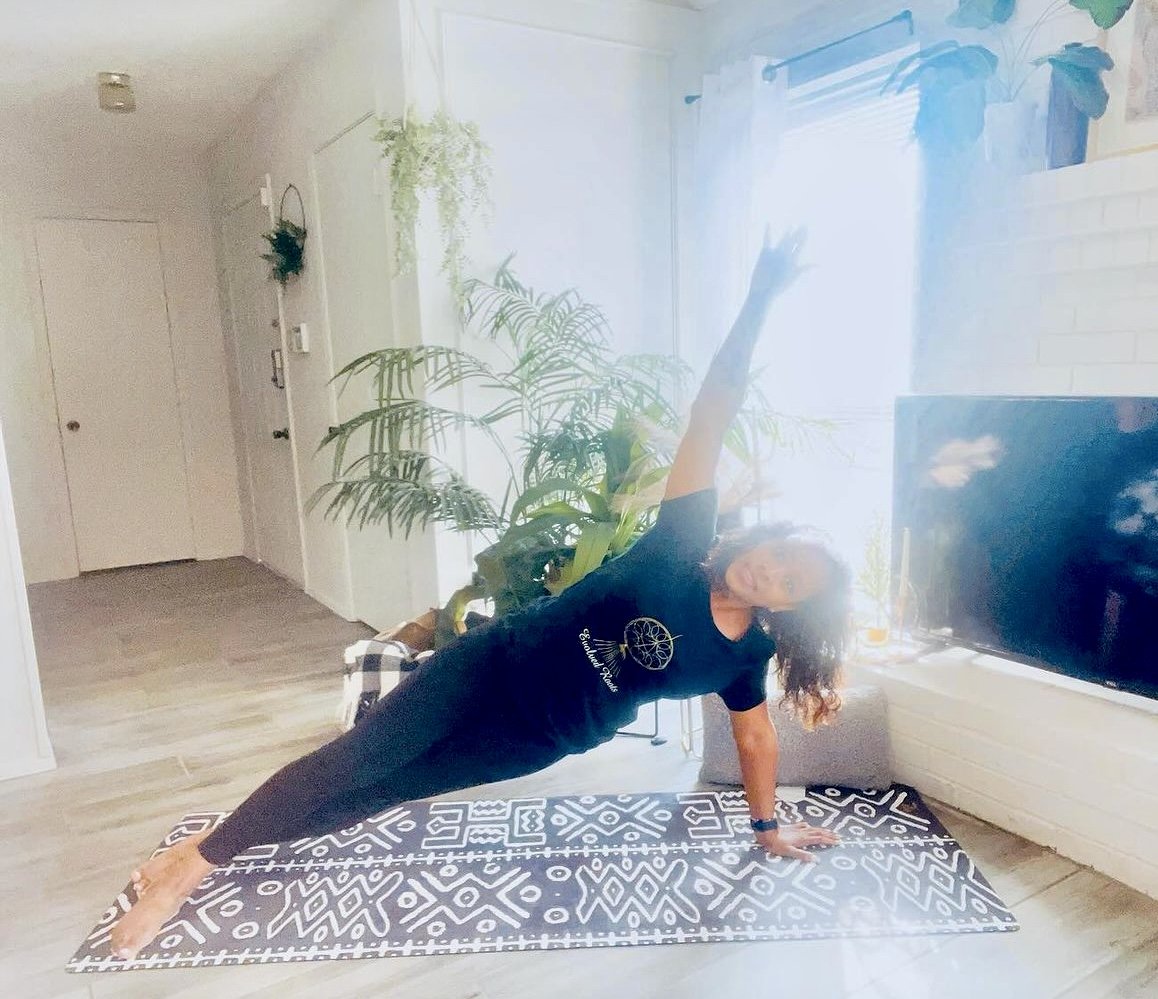
Vasisthasana ~ Side Plank Pose
Side Plank is an arm balancing posture that promotes both balance, strength, and flexibility, and strengthens the entire side body.
Side Plank Benefits:
•strengthens your wrists, arms, shoulders, legs
•strengthens the core, including the obliques and the muscles
that support your spine
•stretches your hamstrings and hips
•enhances your proprioception
-
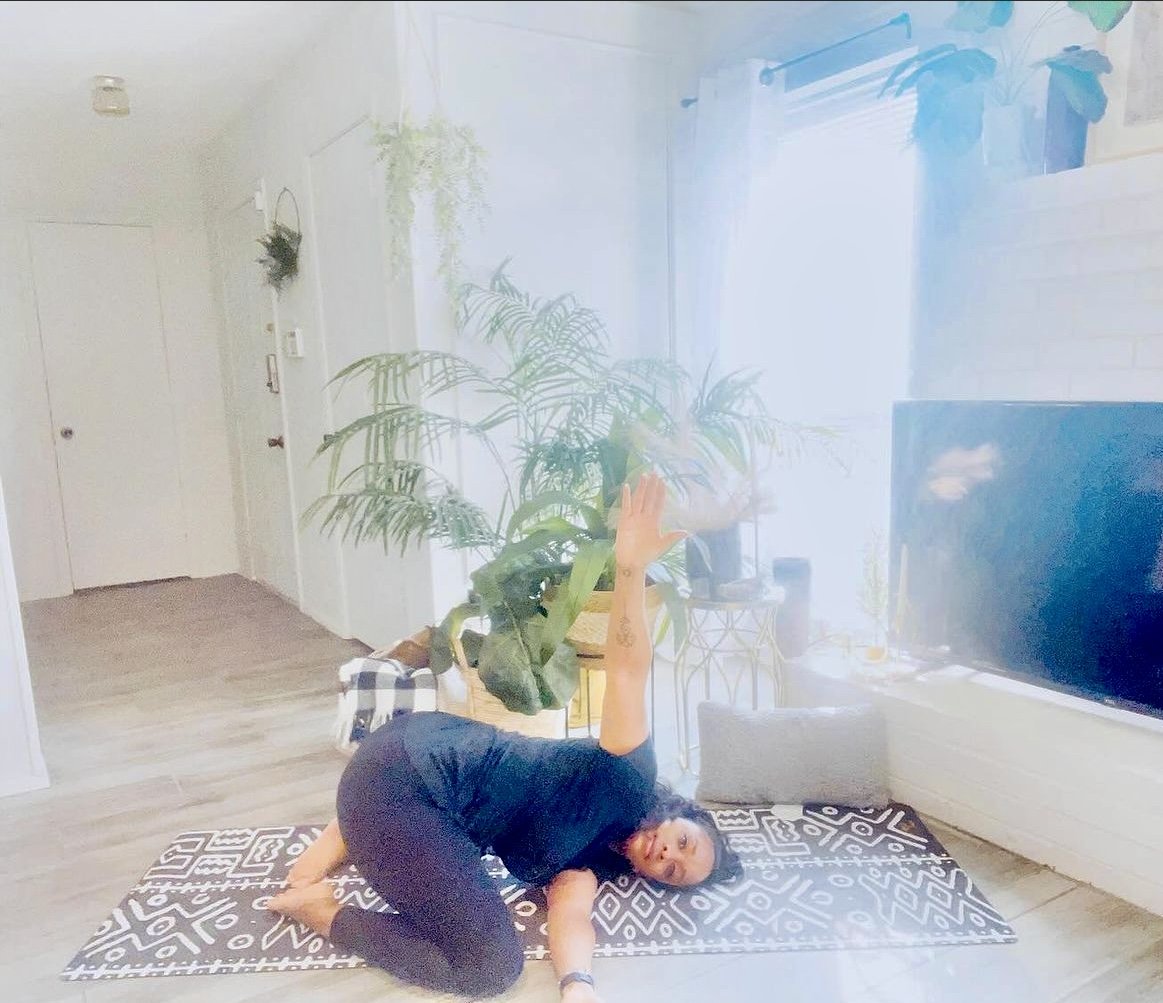
Urdhva Mukha Pasasana ~ Thread the Needle Pose
Thread the Needle Pose is a shoulder-releasing twist posture
Twists like thread-the-needle are detoxifying and energizing and can help stretch and loosen the muscles in the spine and back relieving tension and enhancing flexibility.
Extending the upper arm, or coming into a bind increases the release and relief of tension in the spine and shoulder blades.
Practicing the pose with your hips on your heels (in child's pose) also stretches the hips, thighs, and lower back.
Thread the Needle Benefits:
•Opens up the chest and shoulders
•Releases tension in the neck, shoulders, and upper back
•Increases spinal mobility, primarily at the thoracic
•Relaxes the body and quiets the mind #t Can help to alleviate neck and upper back pain
•Relieves stress
•Increases circulation
-

Camatkarasana ~ Wild Thing
Also known as Flip Dog this pose is a dynamic and challenging posture that requires strength and suppleness in both the shoulder and hip joints, as well as in the core.
Wild Thing Benefits:
•opens up chest, lung, and shoulder areas, as well as the front of the legs and hip flexors
•builds strength in shoulders and upper back
•stretches and tones muscles of the hip girdle such as the psoas, the glutes, as well as the deep external rotators
•stretches the abs and obliques
-
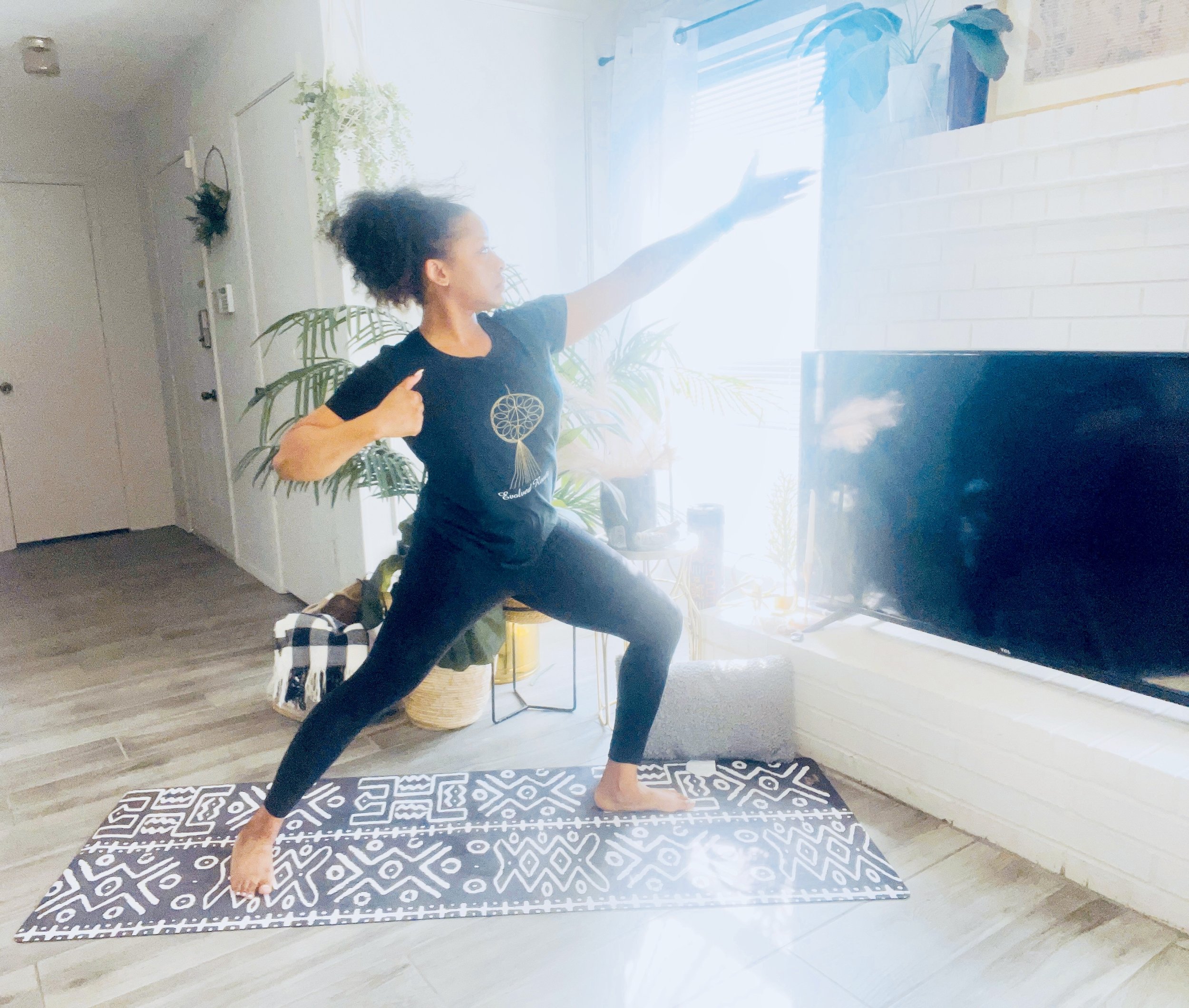
Virabhadrasan Archer Arms ~ Standing Archer Pose
Standing Archer Pose also known as the bow and arrow pose. Represents a warrior holding a bow and an arrow in a standing position.
This posture comes from the spiritual Kundalini Yoga practice.
This posture helps open up your psychic channels to promote a great flow of energy and power.
Standing Archer Pose benefits:
Activates and engages the muscles of the:
✨Arms and Shoulders
✨Biceps and Triceps
✨Hamstrings
✨Hips
✨Knees
✨Psoas
✨Quadriceps
While improving hip flexibility, relieving pelvic pain, and strengthening the arm muscles.
-
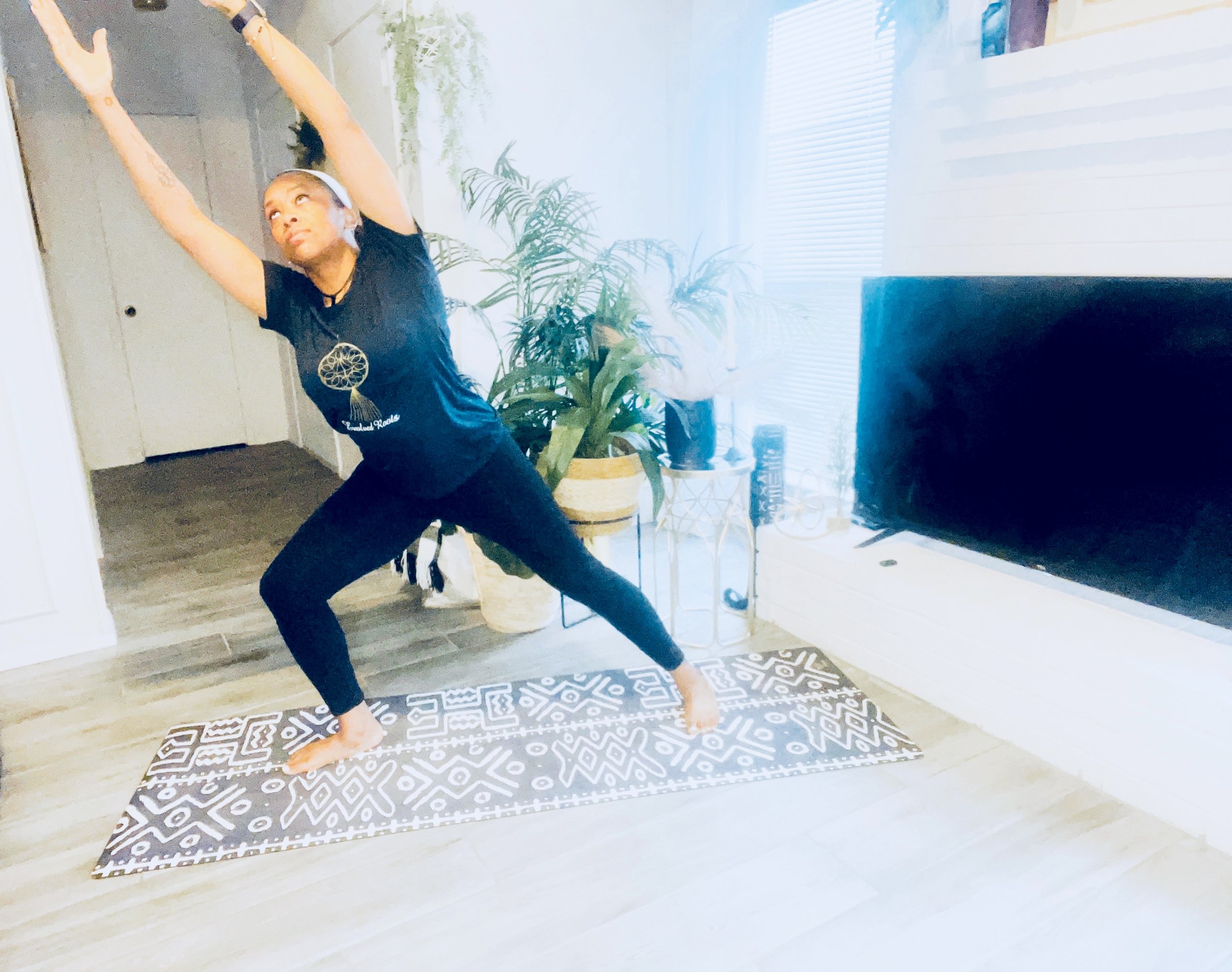
Utthita Parsvakonasana Variation with Both Arms Raised ~ Extended Side Angle with Both Arms Raised
This is a variation of the traditional posture that teaches us how to stabilize our legs while opening and expanding the sides of the rib cage, training the muscles that support our breathing.
Extended Side Angle Pose with Both Arms Raised benefits:
Activates and engages the muscles of the:
✨Arms and Shoulders
✨Lower Back
✨Upper Back
✨Biceps and Triceps
✨Chest
✨Hips
✨External Hips
✨Knees
✨Neck
✨Psoas
✨Quadriceps
While strengthening and stretching the legs, ankles and knees, increasing flexibility in the shoulders, and working the core.
-
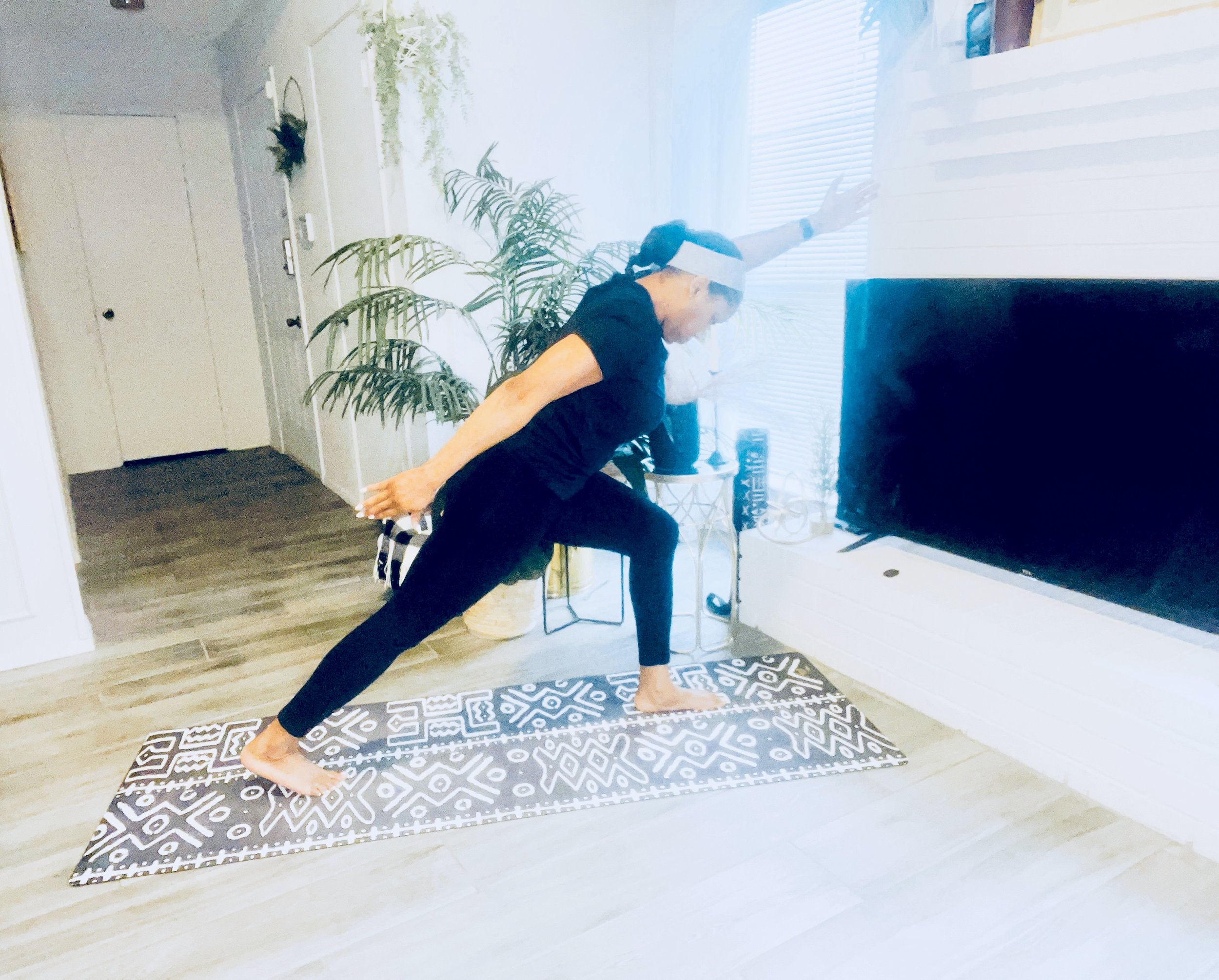
Ashta Chandrasana ~ High Lunge with Arms Extended Forward and Backwards
High Lunge Arms Extended Forward and Backward is a variation of the traditional posture. The only difference being in the positioning of the arms, which are raised above the head, and along the hip, extended forward and back in line with the torso and legs.
It is a powerful posture that creates focus while combining strength, balance, and stretch.
High Lunge Arms Extended Forward and Backward benefits:
Activates and engages the muscles of the:
✨Biceps and Triceps
✨Glutes
✨Hamstrings
✨Hips
✨Internal Hip
✨Knees
✨Psoas
✨Quadriceps
✨Chest
-

Ardha Pincha Mayurasana ~ Dolphin Pose
Also known as Half Feathered Peacock Pose or Peacock Feather Pose, this inversion opens up, stretches, strengthens the upper body, improves flexibility in the hamstrings, and is a great preparatory pose for headstands.
Benefits of Dolphin Pose:
✨strengthens the core, arms, and leg
✨opens and strengthens the shoulders
✨activates the arches of your feet
Dolphin pose is a challenging posture because there’s a lot going on in the body, so be mindful when going into and coming out of the posture.
-

Salamba Bhujangasana ~ Sphinx Pose
Sphinx Pose is a gentle backbend that lengthens the abdominal muscles, strengthens the spine, and firms the buttocks.
This pose invigorates and rejuvenates the body, soothes the nervous system, and is therapeutic for fatigue.
Benefits of Sphinx Pose:
✨excellent for strengthening and stretching chest and shoulder muscles
✨opens the lungs and shoulders
✨stimulates your digestion
✨alleviates tension or pain in the lower back
✨calms the breath
(Note: elbows should be in line with shoulders arms and gaze forward, and chest up. Mine are slightly back here which changes the posture just slightly)
-

Trikonasana ~ Triangle Pose
Triangle pose is a foundational standing posture that strengthens and lengthens the hamstrings and groin while also opening the shoulders and stretching the hips.
Triangle pose requires concentration, balance, body awareness, and a steady breath, which can help focus your mind and bring you back to the present moment.
Triangle Pose balances the Root, Heart, and Sacral Chakra.
Benefits of Triangle Pose:
✨stretches and strengthens the thighs, knees, hips, groin hamstrings
✨increases stability
✨activates the core muscles, which aids in balance
✨stretches and lengthens the spine
✨opens the hips and shoulders
✨stimulates the organs
✨reduces stress
-

Garuda Mudra
Mudras are hand gestures or seals that allow us to go inward and recharge our energy levels.
Mudras are used during our practice to stimulate the flow of energy throughout the body, quieten the mind, and intensify the power of our practice.
Mudras can be incorporated into both movement and meditation practices.
The garuda mudra is used to balance the Vata energy in the body.
As the mudra is held, like the wings of an eagle, the breath balances the energy of the air in the body. When vata energy is out of balance in the body, you may feel stuck or completely scattered. Holding the garuda mudra controls the air by bringing it in if you are stuck or by calming it down when you feel scattered.
-

Abha ya Mudra
Abhaya mudra is symbolic of safety, protection, peace, and reassurance, and can be used during challenging times.
It dispels fear and develops courage, highlighted by the name Abhaya which is Sanskrit for "fearlessness."
-

Ganesha Mudra
Named after the Hindu elephant God Ganesh, this mudra is believed to invoke his energy as the remover of obstacles. As such, practicing the Ganesha mudra is said to enhance self-confidence and provide the courage to overcome anything that is holding you back.
-
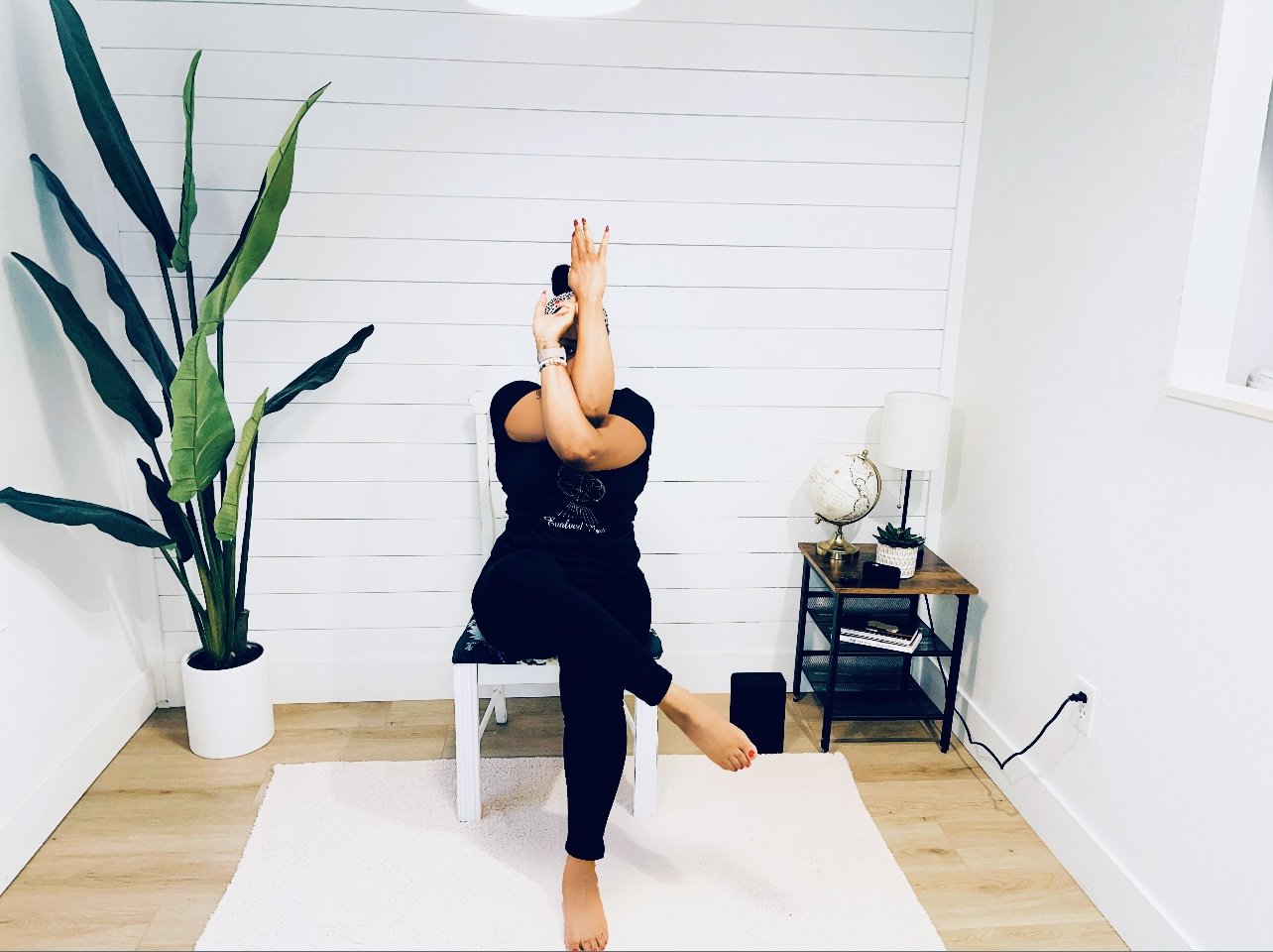
Garudasana ~ Eagle pose in a chair
Chair yoga is an accessible and supportive form of yoga that’s done while seated. Using a chair for balance creates more space, comfort and stability for those living with injuries, limitations, chronic illnesses, or dealing with balance issues.
Chair yoga is a perfect tool to decrease stress levels, improve mood, boost your confidence, and relieve anxiety and depression.
Eagle pose in a chair is a stretching, twisting, flexibility, endurance, and strengthening posture that brings the hips into rotation and abduction while working the arms and shoulders.
Eagle Pose Chair benefits:
Activates, stretches, and engages the muscles of the:
•Arms and Shoulders
•Upper Back
• Knees
-

Parighasana ~ Gate Pose On Chair
Seated Gate pose opens and stretches the upper and side body while activating and engaging the Anahata ~ Heart Chakra as it works deeply into the intercostal muscles.
Seated Gate Pose benefits:
Activates and engages the muscles of the:
•Arms and Shoulders
•Middle Back
•Upper Back
•Glutes
•Chest
•Hips
•External Hips
•Psoas
-
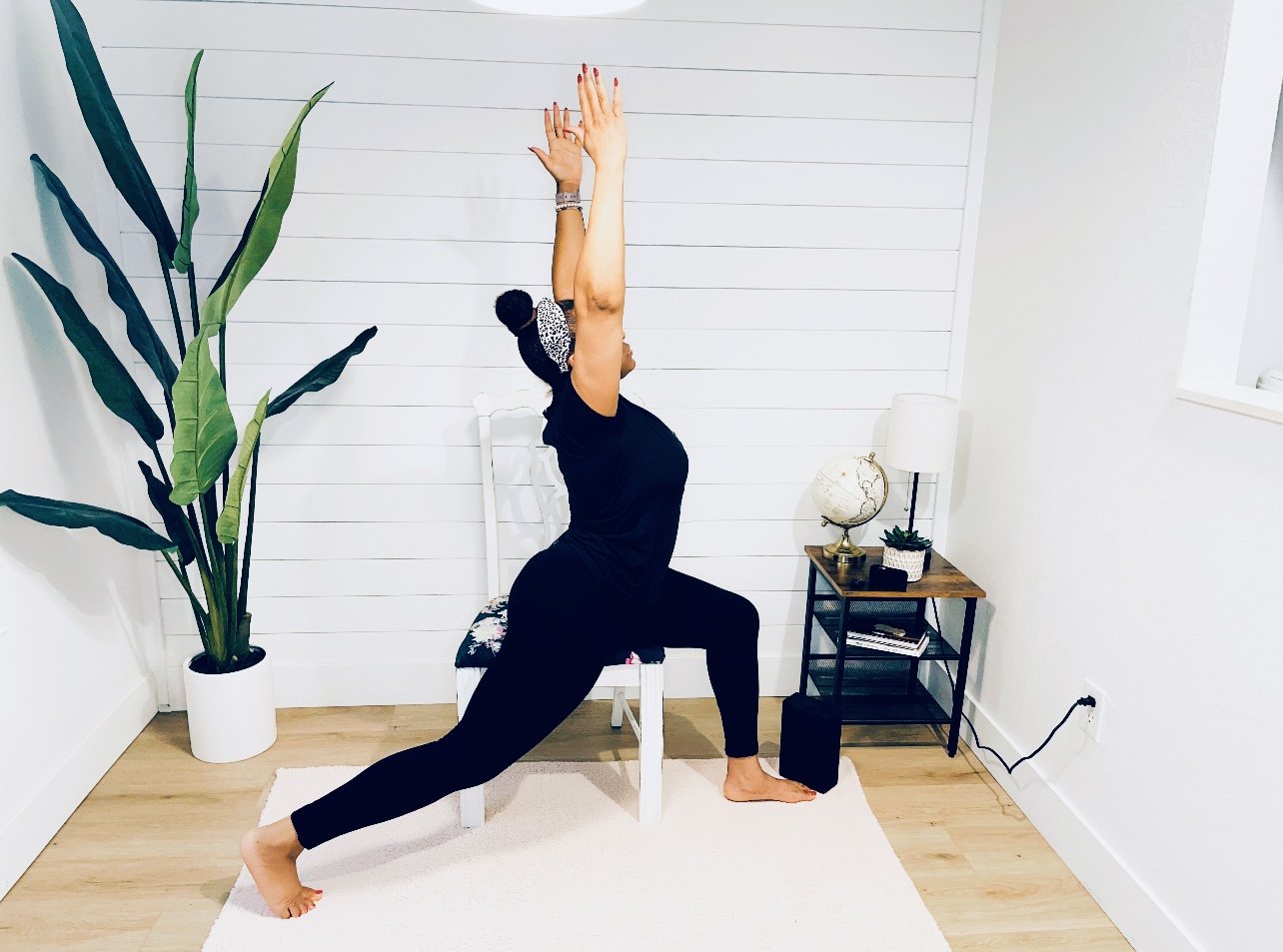
Ashta Chandrasana ~ High Lunge in a Chair
High Lunge in a Chair is a supported variation of the foundational posture with the lower body supported on the chair, which takes the weight or pressure off the knee and ankle joints.
This pose allows you to find stability and develop strength and flexibility in the muscles.
High Lunge in a Chair benefits:
Activates and engages the muscles of the:
•Glutes
•Hamstrings
•Hips
• Internal Hips
•Knees
•Psoas
•Quadriceps
-

Anjaneyasana ~ Crescent Lunge in a chair
Crescent Lunge in a chair strengthens and tones the thighs, hips, and butt, while the balancing aspect helps to develop flexible stability.
This posture is a balancing backbend, and heart opener that helps the front of the body to expand, which increases energy and reduces fatigue.
Crescent Lunge in a Chair benefits:
Activates, stretches, and engages the muscles of the:
•Hip flexors
•Chest
•Shoulder
•Torso
•Quadriceps
This is a great energizing posture to counter-stretch for front load-bearing workouts such as cycling and running, as well as for those who sit most of the day.
-

Utkata Konasana ~ Goddess Side Stretch in a chair
Goddess Pose Chair Side Stretch is similar to the Yin Yoga Horse Side Stretch pose.
This seated variation is great for those suffering from wear and tear of ligaments at the knees and ankles, tight hips and shoulders, recovering from an injury or surgery, or any other limit or limitation that may be present in the body.
With the lower body supported in the chair, you can focus your awareness on the upper body which allows you to breathe deeper as you work deeply into the muscles of the abdomen, chest, rib cage, shoulders, and upper back.
Goddess Pose Chair Side Stretch benefits:
Activates, stretches, and engages the muscles of the:
•Upper Back
• Chest
•Hips
•External Hips
•Knees
•Pelvic
•Psoas
-
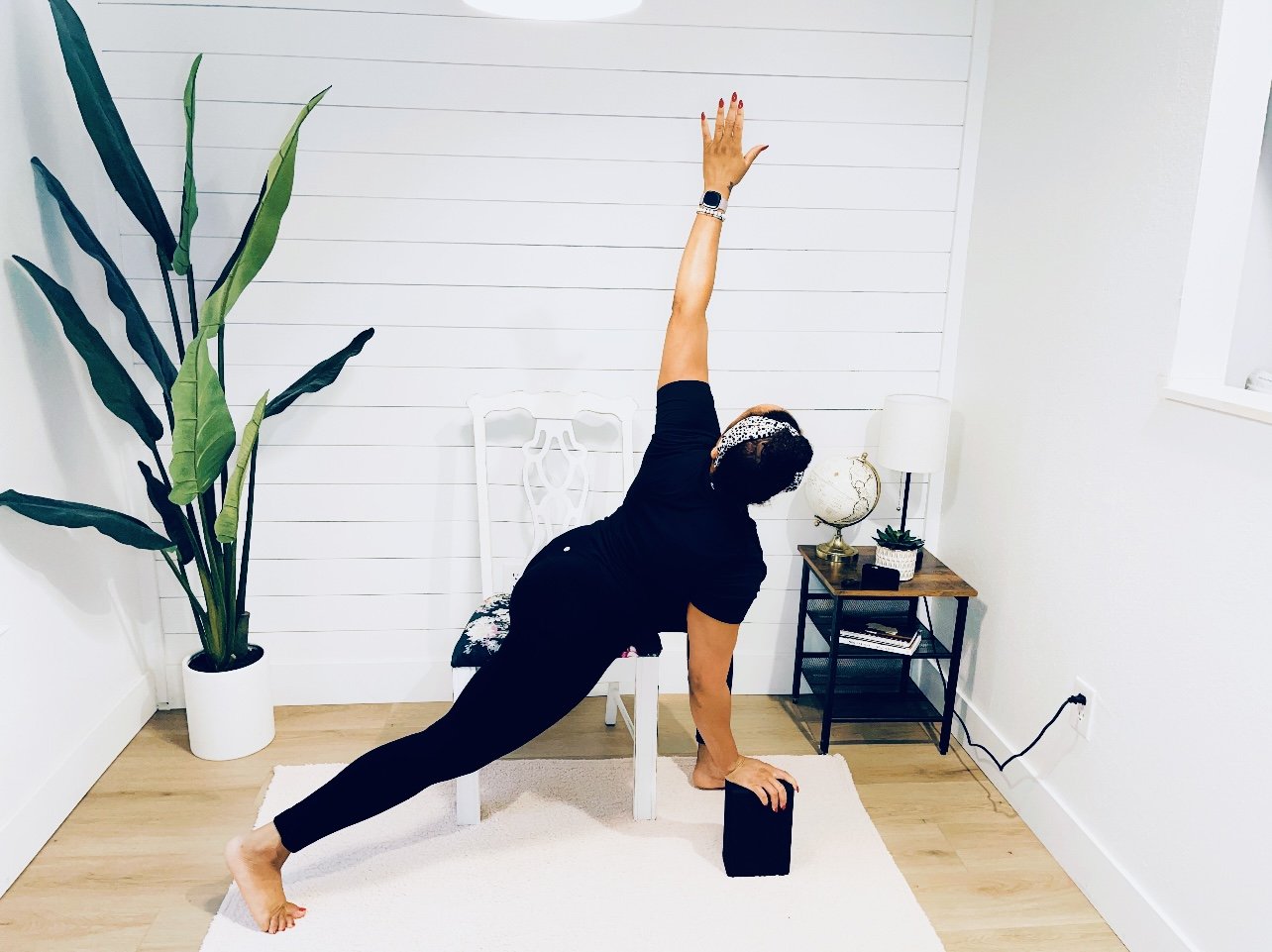
Parivrtta Utthita Ashwa Sanchalanasana ~ Revolved Lunge Pose in a chair
Revolved Lunge, or lunge twist is an excellent combination of heart and hip opener.
This posture involves bending, stretching, and twisting while balancing the body weight on the seat of the chair.
Revolved Lunge Pose in a chair benefits:
Activates and engages the muscles of the:
•Arms and Shoulders
•Lower Back
•Core
•Glutes
•Hamstrings
•Chest
•Hips
•Knees
•Neck
•Psoas
•Quadriceps
Meditate With Me
Meditate With Me

